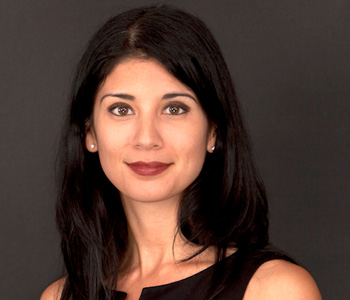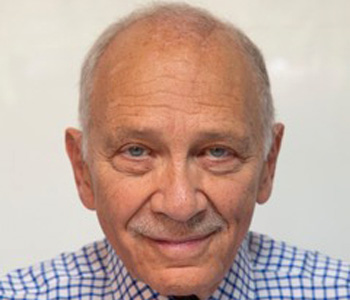Ralph James Savarese
See It Feelingly: Classic Novels, Autistic Readers, and the Schooling of a No-Good English Professor
Duke University Press
296 pages, 6.2 x 9.2 inches
ISBN 978 1478001300
Can autistic people, across the spectrum, read literary fiction? Can they enjoy and profit from the experience? For years, experts have said no. A “triad of impairments”—in language, social understanding, and imagination—made literature a bad fit for the autistic brain. This population, the logic went, was better suited to mathematical or scientific endeavors, arenas that don’t depend on “theory of mind” or a nuanced appreciation of figurative language. (The former involves the ability to ascertain the mental states of others; the latter involves the ability to handle sentences like this one: “Fiction is a moody jungle-gym of make-believe conflict.”) This view of autism became so prevalent that a best-selling novel, The Curious Incident of the Dog in the Nighttime, used social and metaphorical bafflement as a central aspect of the protagonist’s characterization. My book offers a radically opposing view. An ethnographic project involving six autistic readers, See It Feelingly presents the rich, and sometimes richly different, responses to literary works by people whom the medical community would describe as “impaired” but who would describe themselves as “neurodivergent”—distinctive neurologically. My collaborators include my son, DJ Savarese (with him I discussed The Adventures of Huckleberry Finn); Tito Mukhopadhyay (Moby-Dick); Jamie Burke (Ceremony); Dora Raymaker (Do Androids Dream of Electric Sheep?); Eugenie Belkin (The Heart Is a Lonely Hunter); and Temple Grandin (two short stories from Among Animals: The Lives of Animals and Humans in Contemporary Short Fiction). Referencing the burgeoning field of cognitive literary studies, which asks what our brain is doing when we read literature, See It Feelingly seeks to explore the nature of fiction’s hold on us: in particular, its powerful emotional appeal and its ability to acquaint us with people very different from ourselves.
I think of my book as a kind of literary ethnography. It roughly resembles the sort of work that made the late neurologist-writer Oliver Sacks famous. In the preface to one of his books, he speaks of acting “in part like a naturalist, examining rare forms of life; in part like an anthropologist, a neuroanthropologist, in the field.” The neurologically disabled, according to this trope, are like an exotic form of butterfly or a tribe of people that hasn’t yet encountered “civilized” people. With Sacks, the medical case study becomes, as he puts it, a “paradoxical tale” of enabling disability. In See It Feelingly, I, too, offer a series of profiles, but I entirely dispense with what Sacks couldn’t quite shake off: namely, the tyranny of norms and the need to pathologize neurological difference. How did I come to this subject? Twenty years ago, I adopted from foster care a badly abused, nonspeaking, six-year-old boy with autism—he was said to be “profoundly retarded.” Two years ago this May, he graduated Phi Beta Kappa from Oberlin College as its first nonspeaking student with autism. And last year, he won a prestigious Peabody Award for the documentary Deej, which follows his inclusion journey and which he co-produced, starred in, and wrote. This experience was obviously transformative for me as a person and writer. Luckily, the field of disability studies had begun to gather traction around the time that I adopted my son. I now had an interdisciplinary field in which to insert my work. The field distinguished between “impairment,” a physiological condition, and “disability,” a social construction. The latter occurs when the built environment and prejudicial attitudes conspire to not only exclude, but also to demean, people very different from ourselves.
I guess I’d like readers to skip the introduction and prologue and go right to the first chapter. In it I recount discussing Herman Melville’s great tome, Moby-Dick, two chapters a week for seventeen months, with Tito Mukhopadhyay. A nonspeaking person with autism, Tito has himself authored a number of very fine books. Because he lives in Texas and I live in Iowa, we used Skype to conduct our discussions. I would speak, and Tito would type his comments on the sidebar. Readers will be astonished by his insights and, especially, by the way that he identifies with the great leviathan. Although I had written a chapter on Herman Melville in my dissertation and although I have read and taught the novel many times, I had never noticed how important the motif of speech is. Ahab, the tyrannical captain of the Pequod, repeatedly rails against the creature’s silence. In fact, he is driven as much by the impossibility of communicating with his enemy as by the loss of his leg. Approaching the severed head of a whale, he smugly issues a command: “Speak thou vast and venerable head…; speak…and tell us the secret thing that is in thee.” Approaching it once again, Ahab cries in frustration, “O head! Thou hast seen enough to split the planets…and not one syllable is thine!” Precisely because speech is considered the quintessential mark of the human, Tito has despaired of his own inability to speak and of what that inability has allowed people to presume about his competence. Reading Moby-Dick with Tito, I was compelled to consider the speech privilege that lies at the heart of human arrogance. I now can’t imagine teaching Moby-Dick without the input of someone like Tito.
I want readers to consider the advantages of a “difference” model (not a “deficit” one) when approaching autism generally and reading fiction specifically. In an opinion piece, I once wrote, “It’s early in the 21st century, and we still have no idea what autistic people can do.” By that I meant: we’re only now beginning to see autistic strengths by discarding the deeply pathological “all-deficits-all-the-time” lens, and we’re only now beginning to recognize how plastic autistic brains are—as plastic as non-autistic ones. Both neurotypes are capable of growing and changing in dynamic ways. The danger of the autistics-are-good-at-math stereotype is that it encourages us to exclude autistic young people from language arts classrooms and, later, to steer them toward jobs in engineering, say, or computers. We don’t have a narrow sense of nonautistic talent or potential. We don’t categorically recommend that every nonautistic person head for one sort of field and stay away from all others. Yes, students have natural predispositions or proclivities, but our job as educators is not to foster them exclusively. Rather, it is to expose students to a wide range of subjects in the hope that they might discover an unlikely or improbable passion. When reading short stories with Temple Grandin, I learned that her favorite course in college was a literature course, a course that she was certain she would hate and do poorly in. Fifty years after that class, she was still able to talk articulately about Dante’s Inferno and to recite, from memory, lines of poetry by William Wordsworth. Who knew? I hope that my book, which I purposefully wrote in an accessible style, will persuade educators to think differently about autism and literature.




We don't put paywalls. We don't distract you with ads. We don't sell your data.
Please help to keep this running!